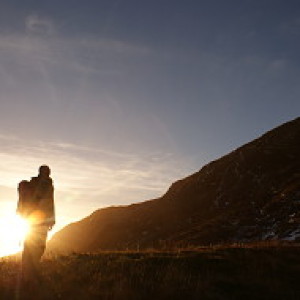Risk taking
At the start of the year, I said I had been playing it too safe, revisiting places I could rely on to provide a blip, and hardly ever going for a walk for its own sake. It's been a fine evening here, and I know that if I travel a mile or so, I can see a splendid sunset over the Lake District fells with watery reflections, and the odd gull or shelduck thrown in. So, despite my New Year's resolution to start taking risks again, I have fallen back into bad habits and have been blipping too many spectacular, but let's face it, rather easy sunsets. I have been too lazy recently even to get up for the dawn, which is when the really special rewards of stillness and ethereal light are to be had. But yesterday's unexpected encounter with Woody reaffirmed my New Year resolve.
Tonight I had decided I wouldn't worry about blipping, I'd have a night off, and enjoy an evening walk over Arnside Knott instead. And then I stumbled on something wholly unexpected, here was a roe doe suckling her speckled fawn. I hadn't adhered to my usual rule of keeping the long lens on the camera in case of the unexpected, but although she was aware I was there, she gave me time to duck back behind a hawthorn bush, change the lens and take a few shots. This is what photography is all about for me, a magical unexpected moment captured - while the beauty of Blipfoto is that it allows us to share the moment.
This is such an extraordinary, if not unusual sight on Arnside Knott. This limestone hill within such easy walking distance for Arnside is where every dog owner in the village heads for once, twice or more a day. And none of the dogs are on leads. Last year I met a man with two lurchers, and he was boasting to me about how they regularly caught rabbits and hares. What about the deer, I asked him. Oh, it's good for them, he said, it keeps them alert. Hmm, I thought. But somehow, they survive. The roe deer is increasing in range and abundance in Britain, it is quite at home on the urban fringes, and is a species of mixed habitats. It tends to be fairly solitary, and when very young the fawns will lie absolutely still until danger is past. But it is still a wonder for me that they successfully breed in such a well used and apparently high risk environment. True survivors.

Comments
Sign in or get an account to comment.


